Understanding Dystrophy: Types and Implications
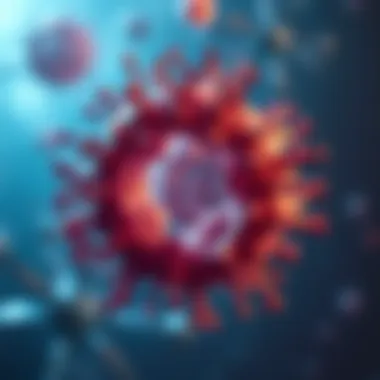
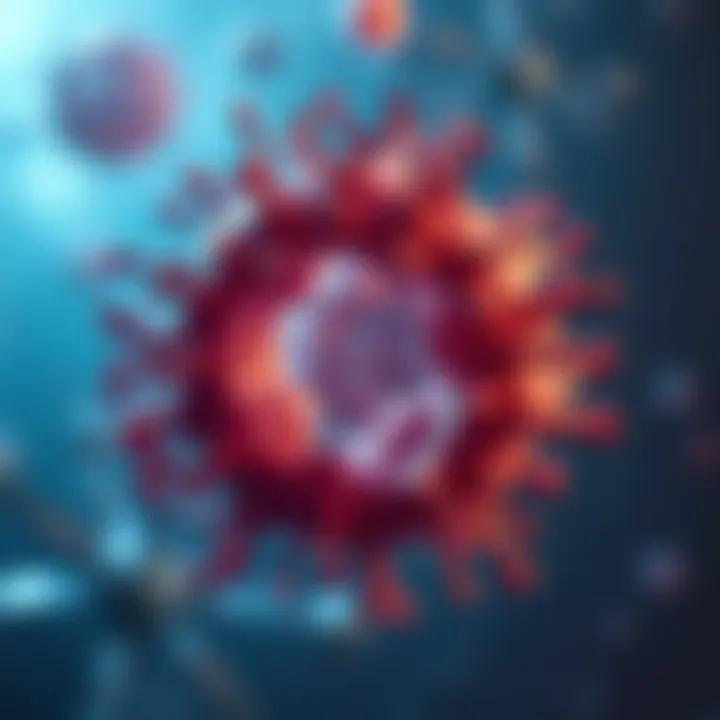
Intro
Dystrophy is a term that often elicits a myriad of reactions, given its association with tissue degeneration and various medical conditions. At its core, dystrophy signifies a progressive alteration in tissue, typically resulting in impaired function and structural breakdown. Notably, this condition encompasses a broad spectrum of disorders that can range from muscular dystrophies to ocular and skin issues. Understanding dystrophy isn’t just about recognizing the physical changes; it’s about grasping the implications these changes have on individuals and the subsequent need for comprehensive management strategies.
The importance of delving into dystrophy lies in its multi-faceted nature. Genetic factors often interlace with environmental triggers, leading to a complex web of effects on the body. Analyzing these nuances is crucial as it informs both clinical practice and ongoing research endeavors. By shedding more light on the different forms of dystrophy and their respective impacts, we open avenues for enhanced diagnostic and treatment protocols. This exploration will also highlight the variances among types of dystrophy, leading to a more tailored approach in managing each condition and its effects on patients’ lives.
Thus, this article will not only define dystrophy and its various forms but will also map out the current understanding of the underlying mechanisms at play. We aim to illuminate the clinical presentations, delve into the methodologies that guide practitioners, and discuss the implications these conditions have on affected individuals—both from a medical standpoint and in their everyday realities.
The journey through understanding dystrophy will not only enrich our knowledge but might also pave the way for future advancements in the field.
Defining Dystrophy
Understanding dystrophy is crucial for anyone delving into the complexities of tissue degeneration. At the heart of this discussion is the need to clarify what dystrophy truly signifies. Without a solid grasp of its definition, one might overlook the gravity and implications of such conditions on individuals. By demystifying dystrophy, we can provide a foundation for further exploration into its various types and their respective consequences, not just on health but also on social interactions and daily life.
Origin of the Term
The term "dystrophy" has its roots in the Greek words "dys," meaning bad or difficult, and "trophē,” which signifies nourishment or development. Put together, they communicate a sense of poor growth or inadequate nourishment. This isn’t just a pretty phrase but rather a reflection of the biological processes involved. In essence, dystrophy describes a condition where tissues do not develop properly or degenerate, leading to a range of health concerns depending on the type involved. Understanding this etymology is like peeling the layers off an onion, revealing the fundamental issues that underpin various forms of dystrophy.
General Definition
Dystrophy broadly refers to a category of disorders characterized by the progressive degeneration of tissues. It encompasses a variety of conditions that affect not just muscles but also other organs, impacting individuals at different life stages.
Key aspects include:
- Progressive Nature: Many forms of dystrophy worsen over time, leading to significant impairments.
- Varied Manifestations: Symptoms can range dramatically from mild to severe, depending on the specific type of dystrophy.
- Diverse Causes: Factors contributing to dystrophy are both genetic and environmental, which adds another layer of complexity to understanding and managing these conditions.
To summarize, a clear understanding of dystrophy sets the stage for exploring its various manifestations, underlying mechanisms, and implications on life quality. The language we use to define these conditions matters, as it shapes how we think about, research, and address these critical health challenges.
Types of Dystrophy
Understanding the various types of dystrophy is crucial to grasp the broader picture of how these conditions manifest and affect individuals. Each type presents its own unique characteristics, symptoms, and implications. This article aims to shine a light on the significance of identifying different dystrophies, as it lays the groundwork for tailored approaches in treatment, management, and support for those affected.
Muscular Dystrophies
Muscular dystrophies represent a group of genetic disorders characterized mainly by progressive muscle weakness and degeneration. Conditions like Duchenne and Becker muscular dystrophy can have dire implications not just for mobility but also for overall quality of life. Most communities have a shared understanding that muscular dystrophies are severe, but what isn’t always clear is the spectrum of the conditions.
For instance, Duchenne muscular dystrophy, often diagnosed in early childhood, leads to a swift decline in muscle strength, while Becker muscular dystrophy may allow for greater independence into later years. This variance emphasizes the importance of not only recognizing the condition but understanding how it affects individuals differently. Early intervention, such as physical therapy and possible use of corticosteroids, can slow progression and retain muscle function longer.
Ocular Dystrophies
Ocular dystrophies primarily affect the eyes, leading to degeneration of retinal tissue or other eye structures. These conditions can manifest as loss of vision, excessive sensitivity to light, or other debilitating symptoms. Take, for example, Stargardt disease, a common form of juvenile macular degeneration, which can lead to significant vision loss often during childhood or adolescence.
Unlike many muscular dystrophies, ocular dystrophies may not be immediately life-threatening, but they dramatically impact daily activities. Furthermore, patient support often requires not only medical interventions but also emotional and psychological backing, as loss of vision can lead to a feeling of isolation.
Neurological Dystrophies
Neurological dystrophies are conditions that affect the nervous system, leading to various degrees of impairment of voluntary control over muscles. The symptoms can be subtle or pronounced and may include muscle stiffness, spasms, or abnormal movements. A common example is dystonia, a condition that can make everyday tasks seem Herculean.
It’s important to understand that neurological dystrophies can be multifactorial in nature, with both genetic and environmental influences at play. To manage these conditions effectively, healthcare providers often need to adopt a multi-disciplinary approach that includes neurologists, physical therapists, and even dietitians.
Skin Dystrophies
Skin dystrophies, while perhaps less discussed than muscular or ocular types, still represent significant conditions that impact individuals. Conditions like epidermolysis bullosa cause fragile skin that blisters and tears easily, which can lead to chronic pain and infections. The sight of inflamed skin can be alarming but goes much deeper than aesthetics; it affects self-esteem and day-to-day living.
Patients may require ongoing treatment for their skin, ranging from topical applications to surgery for severe cases. Educating affected individuals and their families about managing these conditions is vital for ensuring a higher quality of life.
Each type of dystrophy has unique challenges and opportunities for intervention. Identifying and understanding these can lead to personalized care that improves overall outcomes.
In summary, the categorization into types is not merely academic; it serves essential practical purposes in the diagnosis, treatment planning, and ultimately, the quality of life for those living with dystrophies.
For further reading on dystrophies and their implications, consider exploring resources from reputable organizations such as National Institute of Neurological Disorders and Stroke and Muscular Dystrophy Association.
Understanding the typology of dystrophies can empower all involved in the care and support of those affected.
Underlying Mechanisms
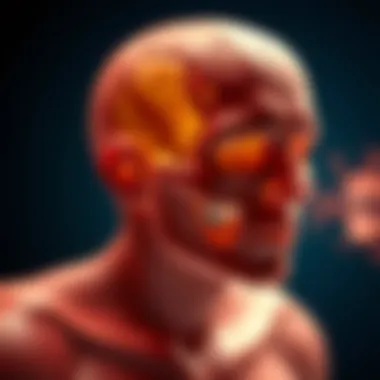
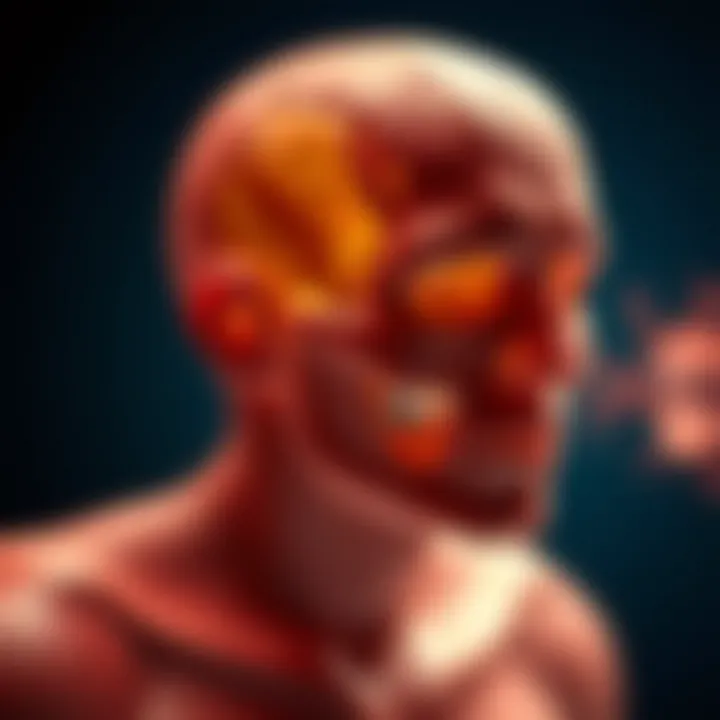
Understanding dystrophy requires a look at what lies beneath the surface—its underlying mechanisms. These mechanisms are pivotal because they shed light on how and why dystrophies develop and progress. By delving into the genetic factors and environmental influences, we can piece together the complexities of these conditions, thus forming a comprehensive picture of dystrophy.
Genetic Factors
Genetic factors play a crucial role in the manifestation of dystrophies. They comprise patterns of inheritance that influence whether a person might develop a particular condition.
Inheritance Patterns
The inheritance patterns associated with dystrophies can be intricate. For instance, some dystrophies follow an autosomal dominant pattern, where a single copy of the mutated gene can cause the disorder. Others can be autosomal recessive, meaning that both copies of the gene must be affected for symptoms to appear. This complexity is a double-edged sword. On one side, understanding inheritance patterns helps in risk assessment for families. On the other, it raises questions about genetic testing and counseling, which can be delicate subjects.
The key characteristic of these inheritance patterns is their predictive power for future generations. If a family history indicates a certain pattern, it enables individuals to make informed decisions about reproduction and health management. However, not every family pattern is straightforward, and that's where unique features of these patterns come into play. For example, some conditions might not appear until later in life, complicating early intervention efforts.
Gene Mutations
Moving on to gene mutations, these are often at the heart of dystrophies. A mutation can be described as a change in the DNA sequence, which may disrupt normal biological processes. Some mutations are inherited, while others may occur spontaneously. The complexity surrounding gene mutations is underlined by their implications in treatment and genetic counseling.
What sets gene mutations apart is their significant role in various dystrophies. For example, mutations in the DMD gene are well-known for causing Duchenne muscular dystrophy, while others may lead to conditions affecting the eyes or skin. The distinctive feature of these mutations lies in their heterogeneity—not all mutations produce the same effects, leading to a diverse range of symptoms and severity.
The advantage of focusing on gene mutations is their potential for personalized therapy. Understanding the specific mutation can lead to targeted treatments which are critical for improving outcomes. However, they can also present challenges, as not all mutations can be effectively treated.
Environmental Influences
Environmental influences provide another dimension to the understanding of dystrophies. These factors can interact with genetic predispositions, ultimately triggering or exacerbating conditions.
Nutritional Deficiencies
Nutritional deficiencies have emerged as significant contributors to various dystrophies. For instance, deficiencies in specific vitamins and minerals can alter muscle function and overall health, leading to deteriorations seen in myopathies. This topic is particularly relevant, as nutritional status is modifiable through dietary changes.
A core characteristic of nutritional deficiencies is their preventable nature. Addressing these can substantially improve outcomes for some individuals with dystrophies. However, it's important to note that while improving nutrition can have beneficial effects, it may not entirely reverse a dystrophic condition. The unique feature of this interaction between nutrition and dystrophies underscores the value of maintaining a balanced diet, especially in at-risk populations.
Toxin Exposure
Toxin exposure is another aspect that can't be overlooked. Environmental toxins, such as heavy metals or chemical pollutants, can negatively impact the body's functioning and contribute to tissue degeneration. This factor highlights how our surroundings can shape our health in ways that might not be immediately obvious.
The noteworthy aspect of toxin exposure is its pervasive nature. Many people may come into contact with harmful substances daily without even realizing it, leading to chronic health issues over time. Understanding this can help in advocacy for regulations and preventive measures to safeguard health.
In summary, both nutritional deficiencies and toxin exposure present valuable insights into the environmental influences on dystrophy. They serve as reminders that while genetics play a significant role, the environments we inhabit also play a critical part in health and disease management.
"The intersection of genetic and environmental factors paints a more nuanced picture of dystrophy than either could alone."
In comprehending the underlying mechanisms of dystrophy, one must consider the intricate dance between genetic predispositions and environmental exposures. This holistic approach is not merely academic; it has real-world implications for prevention, diagnosis, and treatment.
Clinical Manifestations
Understanding the clinical manifestations of dystrophy is crucial, given that these signs and symptoms serve as the primary indicators of the various forms of the condition. Through recognizing these manifestations, healthcare professionals can make informed decisions regarding diagnosis and treatment, while individuals affected by dystrophy gain insights into their condition. Moreover, the manifestations reflect how dystrophy impacts one's daily life, emphasizing both the physical and emotional challenges that patients confront.
Symptoms Overview
The symptoms of dystrophy vary widely depending on the specific type, yet common threads weave through many forms. Some frequent symptoms include:
- Muscle Weakness: This is a hallmark feature, often present in muscular dystrophies. Individuals may notice fatigue during activities that previously felt manageable.
- Vision Problems: Affected individuals might experience difficulties with sight, particularly in ocular dystrophies, which can lead to progressive sight loss.
- Skin Manifestations: Skin dystrophies may present with atypical scarring or abnormalities that can often raise concerns about underlying health issues.
Symptoms can range from subtle to profound, leading to a spectrum of impacts on quality of life. For example, a person with mild muscle weakness might continue to engage in regular activities but gradually finds those tasks more taxing. For another individual facing more severe manifestations, such as difficulty walking or maintaining balance, the journey can be markedly different, necessitating adaptations in their everyday life.
Progression of Conditions
The journey of dystrophy does not remain static; it often manifests as a progressive condition. This means that over time, individuals may experience a gradual worsening of symptoms. In some cases, this progression can be relatively slow, allowing for adjustments and coping mechanisms to be instituted.
- Early Stages: In the initial phases, symptoms are often mild and may only present during physical exertion.
- Middle Stages: As conditions advance, individuals often find it increasingly challenging to perform daily activities without fatigue or discomfort. This can lead to physical limitations that may require assistive devices for mobility.
- Late Stages: In the later stages, particularly for severe forms of dystrophy, comprehensive care and support become vital, as individuals might face significant physical and emotional challenges.The progression can vary significantly depending on the type and individual circumstances, including co-existing medical conditions that can affect speed and severity.
Understanding these stages is crucial for healthcare providers, caregivers, and the affected individuals themselves, as it guides treatment decisions, therapeutic interventions, and planning for future care needs.
"Knowledge of the manifestations and progression of dystrophy not only aids in timely diagnosis but also empowers patients and families to navigate the complexities of living with this condition."
Ultimately, recognizing the clinical manifestations of dystrophy opens doors for deeper discussions surrounding management strategies and support systems necessary for those affected. This section lays the groundwork for understanding the implications of current treatment approaches, bridging into the next vital aspects surrounding the diagnosis of dystrophy.
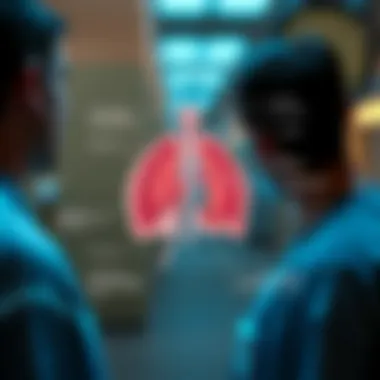
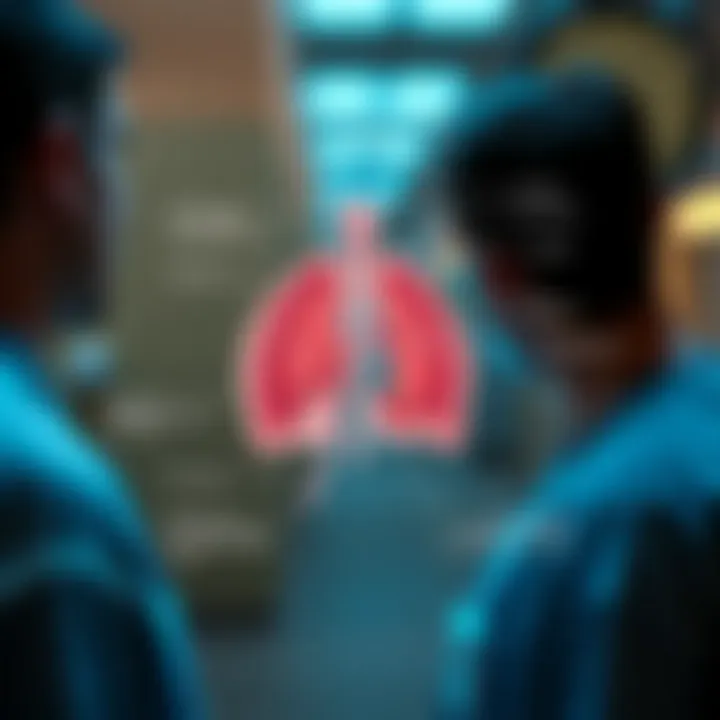
Diagnosis of Dystrophy
Diagnosing dystrophy is a multifaceted endeavor, as it serves as the key that opens the door to understanding various types of tissue degeneration. An early and accurate diagnosis is paramount for several reasons, including enabling effective treatment strategies, informing family planning, and offering emotional support for the patients and their families. Understanding this process plays a critical role in unraveling the complexities behind dystrophic conditions, which have far-reaching implications for individuals and healthcare systems alike.
Clinical Evaluation
The first step in diagnosing dystrophy often starts with a comprehensive clinical evaluation. Physicians typically begin this process by gathering a thorough history of the patient’s symptoms, earlier medical history, and family background. These elements are crucial as they can unravel both genetic predispositions and environmental factors likely affecting the condition.
During the physical examination, doctors look for specific signs that may indicate the presence of dystrophy. These can include muscle weakness, atrophy, or irregular eye movements that are characteristic of certain dystrophies. Physicians generally discuss the patient's capacity to perform daily tasks, range of motion, and any observable physical limitations. This observational and conversational approach helps create a fuller picture of how dystrophy impacts each unique individual.
A key point in clinical evaluation is using standardized assessments to quantify muscle strength or endurance. These assessments and evaluations enable healthcare providers to track the progression of the condition over time and adjust treatment strategies accordingly.
Genetic Testing
Genetic testing stands as a cornerstone for diagnosing many types of dystrophy, particularly muscular dystrophies, where specific gene mutations are involved. The process usually includes a blood sample to isolate DNA and analyze it for genetic mutations.
Through genetic testing, healthcare professionals can identify particular mutations responsible for dystrophies, such as the DMD gene linked to Duchenne Muscular Dystrophy. Knowing the exact genetic anomaly can allow for more tailored treatment approaches and help in the detection of risks for future generations. This specialization doesn’t just inform treatment; it provides critical insight into the prognosis and potential courses of the disease.
It's also important to take into consideration that testing can raise ethical and emotional considerations, prompting discussions about the possible implications of results—both for the individual and their family. Understanding these nuances helps in making informed choices about further action.
Imaging Techniques
Imaging techniques have become increasingly vital in the diagnostic process for various dystrophies. These techniques often include MRI and ultrasound, both of which can offer a visual representation of muscle structure and function.
- MRI can reveal specific patterns of muscle degeneration or hypertrophy, which can help differentiate between various forms of dystrophy.
- Ultrasound, on the other hand, is often used to assess muscle quality, offering real-time imaging that helps in evaluating the integrity of muscle fibers.
Additionally, imaging can aid in evaluating organ involvement or other systems affected due to the progression of the disease, contributing to a more holistic understanding of the individual’s health.
"Imaging techniques provide an immediate visual representation of changes within the body, helping clinicians understand the extent of dystrophic processes in a way that clinical evaluation alone may not achieve."
Treatment Approaches
Treatment approaches for dystrophy encompass a range of methods aimed at managing symptoms, enhancing quality of life, and in some cases, modifying the disease's underlying progression. The nuanced nature of dystrophies means that no one-size-fits-all method can suffice; instead, treatments must be tailored to individual patient needs and specific conditions. Understanding these approaches is vital not only for those affected but also for medical professionals and researchers aiming to improve outcomes.
Current Therapies
Current therapies primarily focus on symptomatic relief and rehabilitation to aid patients in maintaining mobility and independence for as long as possible. Some of the most common treatments include:
- Physical Therapy: Aimed at strengthening muscles and improving mobility, tailored exercise programs are often suggested.
- Medications: Depending on the type of dystrophy, steroids like prednisone are frequently used to slow muscle degeneration.
- Assistive Devices: Tools such as braces, wheelchairs, and mobility aids help patients navigate daily life with more ease.
- Nutritional Support: Proper nutrition can play a significant role in managing health and optimizing physical functioning.
By combining these therapies, patients oftentimes experience improved functions and enhanced overall well-being, even amidst the crippling nature of dystrophy.
Innovative Research Developments
In the realm of dystrophy treatment, ongoing research is birthing innovative therapies that hold promise for shifting the landscape of how these conditions are managed. Two notable advancements are gene therapy and biologics.
Gene Therapy
Gene therapy represents a groundbreaking approach that seeks to address the root cause of certain dystrophies. By delivering corrected genes directly to affected tissues, this method holds the key to potentially altering the course of the disease. One key characteristic of gene therapy is its ability to target a specific genetic mutation responsible for the disorder. This precision makes it a compelling option, as it can directly rectify the underlying problem rather than merely manage symptoms.
A unique feature of gene therapy is its potential for long-term effects; once effective, these treatments may provide lifelong benefits after a single round of administration. As a result, many consider gene therapy a favorable choice within the framework of dystrophy treatment options. This promising avenue, however, comes with challenges— such as delivery methods, ethical considerations, and variable response rates among patients.
Biologics
Biologics represent another innovative development in the treatment of dystrophies. These therapies, derived from living organisms, can modulate immune responses and directly impact the mechanisms underpinning tissue degeneration. One prominent aspect of biologics is their capacity to target specific pathways involved in muscle breakdown and repair.
For many, the appeal of biologics lies in their customized nature; they can be designed to suit the individual profiles of patients, addressing unique genetic makeups and responses to treatment. However, biologics aren’t without drawbacks, including high costs and the requisite for ongoing treatment regimens, which may pose accessibility issues in varying healthcare systems.
"Understanding the scope of available treatments can facilitate informed decisions, empowering both patients and clinicians in the journey toward better management of dystrophy."
For further information on these topics, consider exploring resources like National Institutes of Health or relevant studies on PubMed and ClinicalTrials.gov.
Impact of Dystrophy on Individuals
Dystrophy has far-reaching consequences that ripple through the lives of those affected. Recognizing the implications of these conditions is crucial, for it intertwines both the medical understanding and the human experience. This section sheds light on how dystrophy manifests in daily life, from the physical restrictions it imposes to the deeper psychosocial repercussions that often accompany these challenges.
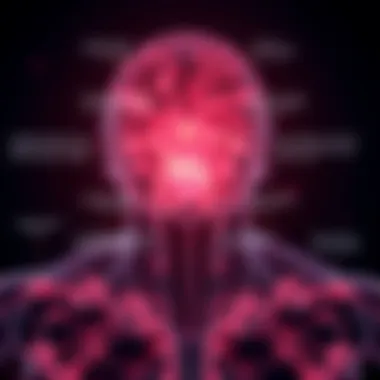
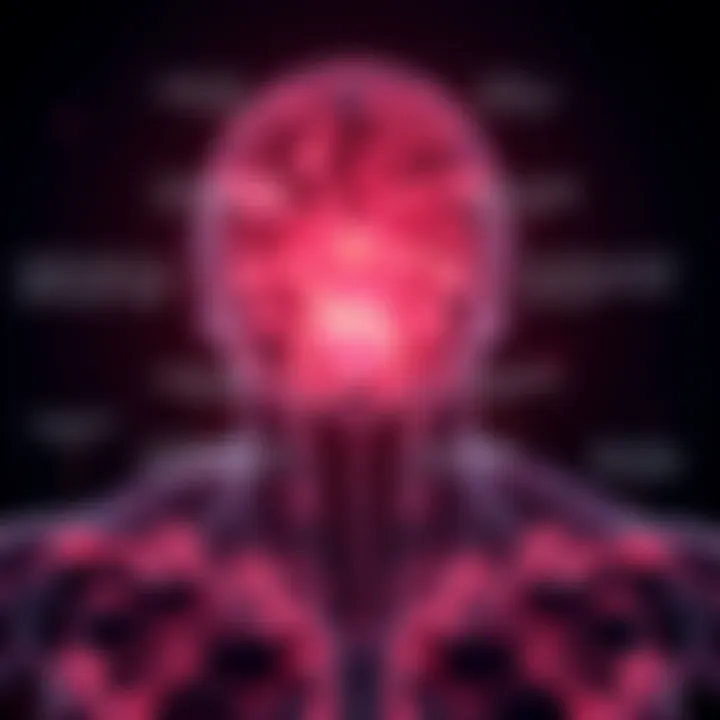
Physical Limitations
Individuals suffering from dystrophy experience various physical limitations which can impact their mobility and overall functionality. For example, muscular dystrophies may lead to progressive weakness, making everyday tasks arduous or even impossible. Activities like climbing stairs, lifting objects, or even walking can become formidable hurdles.
- Mobility Issues: The severity of these limitations varies based on the type and progression of dystrophy. Some may use assistive devices like walkers or wheelchairs, while others face complete dependency on caregivers for basic tasks.
- Fatigue: Chronic fatigue often looms large over individuals with dystrophy. This incessant tiredness not only hinders physical activity but also affects motivation and enthusiasm for life.
- Limited Participation in Social Activities: As mobility decreases, so might the individual’s involvement in social events or community activities, leading to isolation and a sense of exclusion.
These physical restrictions are not merely symptoms of the disease. They can drastically alter the course of a person's life, altering career paths, hobbies, and relationships.
Psychosocial Effects
Dystrophy does not just affect the body; it also takes a toll on the mind and spirit. The psychosocial effects frame an individual’s emotional well-being, social interactions, and sense of identity.
One potent consequence is the psychological burden that often accompanies chronic illness, including:
- Social Stigma: Individuals may feel stigmatized by their condition. Misunderstandings and lack of awareness from others can breed prejudice, leading individuals to feel inadequate or ashamed.
- Mental Health Challenges: A common outcome is an increased risk for conditions such as anxiety or depression. Feelings of helplessness, loneliness, and frustration can emerge as chronic conditions impede personal goals and dreams.
- Strained Relationships: Family dynamics can be thrust into a testing ground. Caregivers may feel overwhelmed, while the affected may struggle with dependency, creating a rift due to the emotional strain of caregiving.
- Identity Crisis: There may be a deep conflict between their self-image and what society expects, causing individuals to grapple with their identity and place in the world.
"Chronic conditions wear on one's spirit as much as they do on flesh."
In light of this, it's evident that understanding the multifaceted impact of dystrophy is essential not just for the individual but for families, healthcare providers, and communities at large. As we move forward, there's a pressing need to foster environments where individuals with dystrophy can thrive both physically and psychologically. Continuing research and education will play a key role in addressing these challenges, ensuring that those impacted receive the support and respect they deserve.
Future Directions in Dystrophy Research
Research into dystrophy is always progressing, and the future holds promising potential for advancements in understanding and treating these conditions. This is a vital area of study, as the implications of dystrophy extend well beyond the biological realm, impacting the lives of many individuals and their families. As knowledge expands, new strategies, insights, and methodologies are continuously challenging existing paradigms.
Emerging Treatments
In the rapidly evolving landscape of dystrophy research, emerging treatments show great promise for addressing the underlying causes and associated symptoms. Here are some developments worth noting:
- Gene Therapy: Advances in gene editing technologies like CRISPR may provide avenues for correcting gene mutations responsible for many types of muscular dystrophies and other forms. This approach is still in its infancy but has shown notable success in preclinical trials.
- Stem Cell Therapy: Researchers are exploring the potential of stem cells to regenerate damaged tissues. Derived from various sources, stem cells have shown potential in repairing or replacing degenerated muscles, offering hope to those affected by muscular dystrophies.
- Pharmacological Innovations: New drug formulations intended to enhance muscle function or slow degeneration are under investigation. A few compounds have moved to clinical trials, showcasing improved efficacy and fewer side effects compared to older treatments.
The relevance of these treatments cannot be overstated. Not only do they represent potential breakthroughs for clinicians and patients alike, but they also pave the way for future studies and enable a deeper understanding of dystrophy's numerous complexities.
Advancements in Basic Science
Understanding the core biology of dystrophy is paramount for developing effective treatments. Several key advancements in basic science highlight this focus:
- Molecular Mechanisms: Ongoing research is shedding light on how dystrophic conditions manifest at a cellular level. Identifying gene pathways and signaling cascades involved in muscle atrophy or degeneration can help refine therapeutic targets.
- Biomarkers: The quest for reliable biomarkers to track disease progression has accelerated. Biomarkers allow researchers to measure treatment efficacy and tailor individual patient approaches, significantly improving outcomes.
- Model Organisms: The use of animal models has provided invaluable insight into disease mechanisms and potential treatment strategies. These models simulate various dystrophies, enabling the thorough testing of new interventions before they transition to human trials.
In summary, the future of dystrophy research is guided by the need to fill gaps in knowledge while fostering the development of innovative treatments. Each step taken within this field contributes toward a better understanding of these often-debilitating conditions and implements potential solutions that could transform the lives of countless individuals affected by dystrophy.
"The path to discovering new treatments is never straightforward, yet perseverance and innovation often light the way to profound breakthroughs."
For further reading, consider visiting:
Ends
Dystrophy, a term that encompasses a range of conditions characterized by the degeneration of tissues, affects many individuals and encompasses complex biological, social, and personal dimensions. In concluding this article, several critical aspects emerge that highlight the significance of understanding dystrophy in a detailed manner.
Firstly, the diverse types of dystrophy reveal how varied these conditions can be, affecting different sectors of health, from muscular issues to neurological impairments. Each type presents its own challenges and requires tailored approaches for diagnosis and treatment. Therefore, understanding these variations isn't just academic; it has real-world implications for how patients and healthcare professionals navigate these conditions.
Secondly, recognizing the underlying mechanisms—whether they be genetic or environmental—illuminates pathways for future research and intervention. As we unveil the intricate web of factors leading to dystrophy, we can better target therapies and develop preventive measures.
Moreover, the clinical presentations and implications on daily living serve as a reminder of the societal impact these conditions have. Individuals coping with dystrophies face both physical limitations and psychosocial challenges. This emphasizes the need for a holistic approach that goes beyond medical treatment, integrating support systems that promote mental well-being and social inclusivity.
Lastly, the current landscape of treatment options and ongoing research signifies that we are moving closer to impactful solutions. Yet, many questions remain, and the call for further exploration cannot be ignored.
Summarizing Key Findings
In this article, we have dissected numerous dimensions of dystrophy:
- Definitions: Dystrophy is a broad term that covers various types of tissue degeneration.
- Types: From muscular to skin dystrophies, each has distinct characteristics and implications.
- Mechanisms: Genetic mutations and environmental factors play crucial roles.
- Clinical Manifestations: Symptoms range greatly across types, impacting quality of life.
- Diagnostic Tools: Clinical evaluations, genetic testing, and advanced imaging are vital for accurate diagnosis.
- Treatment Approaches: Current therapies exist alongside promising research developments in gene therapy and biologics.
- Impact: Dystrophies do not only have physical repercussions but also significant psychosocial effects on individuals.
"Understanding dystrophy is not just a scientific endeavor; it shapes lives and communities."
Call for Further Research
The conversation surrounding dystrophy must continue to evolve. Despite advancements in treatment and understanding, much remains to be explored. Here are several potential avenues for future research:
- Longitudinal Studies: Tracking the progression of various types of dystrophy over extended periods.
- Intervention Strategies: Developing tailored approaches that address both physical and psychological aspects of living with dystrophy.
- Gene Therapy Exploration: Investigating the efficacy and safety of gene editing techniques in treating specific forms of dystrophy.
- Environmental Impact Studies: Researching how varying environmental factors contribute to the onset and progression of dystrophic conditions.
For those interested in diving deeper, resources such as NIH and Mayo Clinic provide additional insights into ongoing research and support mechanisms.



